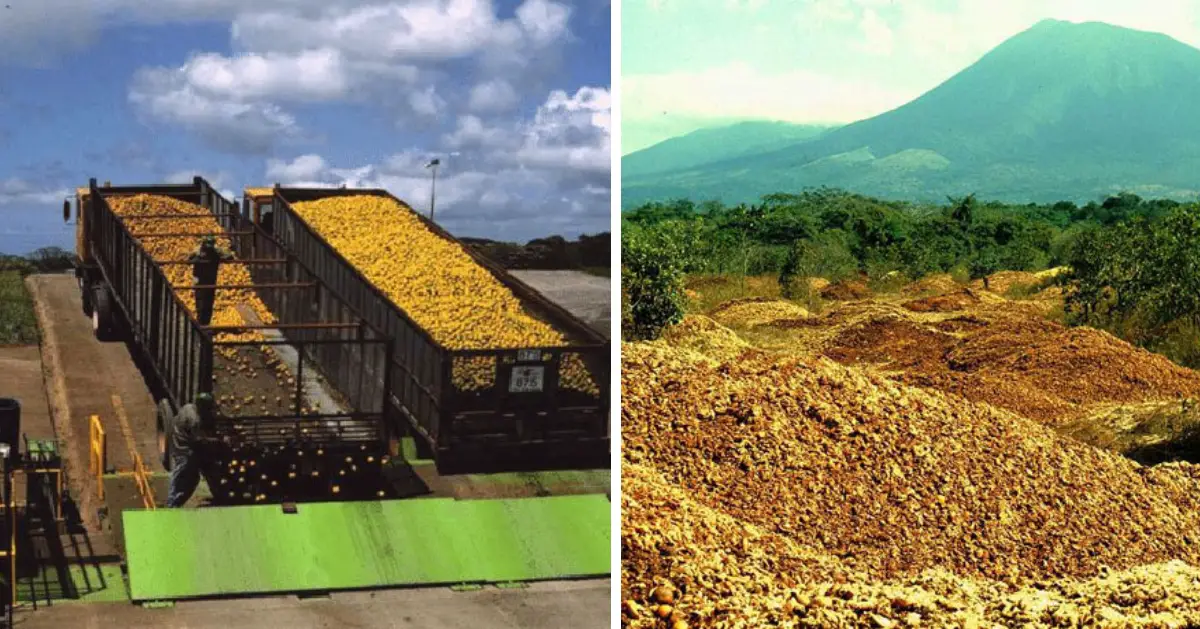“That’s recycling at its best!”
A conservation project, which was abandoned and almost forgotten after it was initiated, has yielded an incredible ecological success almost 20 years later.
In the mid-1990s, a juice company dumped 1,000 truckloads of waste orange peel in a barren pasture in Costa Rica as part of the plan. Despite the project’s cancellation after just two years, the deposited peel had already led to a remarkable transformation of the 7-acre site, which was once desolate, into a lush forest. Above-ground biomass had increased by 176 percent, which is an impressive turnaround.

“This is one of the only instances I’ve ever heard of where you can have cost-negative carbon sequestration,” says Timothy Treuer, an ecologist from Princeton University. “It’s not just a win-win between the company and the local park – it’s a win for everyone.”
In 1997, two ecologists from the University of Pennsylvania teamed up with a fledgling fruit juice company in Costa Rica called Del Oro. The company owned land adjacent to the Guanacaste Conservation Area, a national park situated in the northwestern region of the country that the conservation group sought to obtain. To strike a deal, Del Oro agreed to relinquish its borderland to the park with the condition that it could dump certain agricultural waste in specified park areas.

While the idea of dump sites on conservation land may seem absurd, it was carefully considered. Del Oro only disposed of certain agricultural waste, mainly orange peels and pulp, and did not use pesticides or insecticides. Additionally, the designated dumping sites were located in degraded areas of the park with poor soil quality. The agreement resulted in the expansion of the park’s boundaries and the implementation of a monitored waste management system for the company.

However, not everyone was pleased with the arrangement. TicoFrut, a rival fruit company, sued Del Oro, claiming that the dumping was hazardous and led to piles of decaying peels and an increase in flies. More significantly for TicoFrut, they deemed it unfair since they had previously been required to revamp their waste-processing facility. The country turned against Del Oro after an all-out media battle, and they were forced to terminate the dumping initiative by the Costa Rican Supreme Court. Despite the support and assurances from environmental organizations such as the Rainforest Alliance that the project was environmentally safe, the court ruled against Del Oro.

Over the course of the project, a three-hectare area received 12,000 metric tons of orange pulp and peels. After the Del Oro project was terminated due to the court ruling, the public outcry subsided, but the orange waste remained on the site. In 2013, Timothy Treuer, a Princeton graduate student researching potential topics, connected with one of the original ecologists involved in the ACG-Del Oro project. They proposed conducting a follow-up study to assess the impact of the orange waste on the land, prompting Treuer’s trip to Costa Rica. The results of his investigation were nothing short of surprising.

“Plenty of environmental problems are produced by companies…” said study co-author David Wilcove. “But a lot of those problems can be alleviated if the private sector and the environmental community work together. I’m confident we’ll find many more opportunities to use the ‘leftovers’ from industrial food production to bring back tropical forests.”

According to the study’s authors, the orange peels had a profound impact on the soil , turning an infertile and lifeless terrain into a nutrient-rich, fertile, and loamy blend. The researchers also said that the orange peels may have inhibited the growth of an invasive grass that had hindered forest expansion. This rediscovery of the abandoned conservation project serves as a beacon of hope for other corporations, highlighting the possibility of implementing waste management strategies that are both environmentally and ecologically sustainable.
(h.t: Princeton University | BoredPanda)

